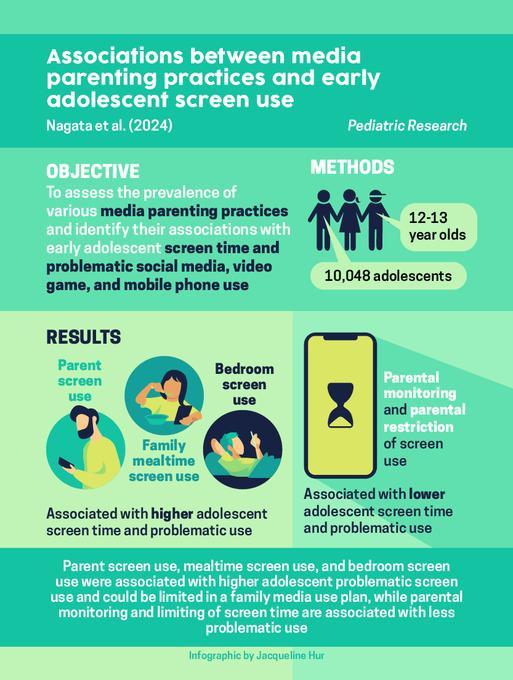Ellen Roome - Who am I?


Agenda
• Screen usage today – the reality
• Why does this matter
• Physical impact
• Developmental impact
• Mental Health
• Societal and developmental challenges
• What can parents do?


Ellen Roome - Who am I?


• Screen usage today – the reality
• Why does this matter
• Physical impact
• Developmental impact
• Mental Health
• Societal and developmental challenges
• What can parents do?

Almost all adolescents have phones and it is becoming increasingly the norm in younger children

Proportion who go online, by age

Proportion who have their own mobile phone by age






You Tube dominates younger children’s usage, but social media usage increases with age

Smartphones have become constant companions for our young people
• The average child has 237 notifications a day – ¼ during the school day and 5% over the night.
• This encourages an average of 51 pick-ups a day which increases to around 100 for teens.



Why does it matter?
Relationships
Mental Health
Emotional Regulation
Physical changes in the brain
Developmental Delays Anxiety
Social isolation Self
Musculoskeletal
Sleep


Harmful Content ADHD
Language
Academic Attainment
Body Image
Attention


• Children who use smartphones for more than 60 minutes daily are 10 times more likely to develop musculoskeletal symptoms than those who don’t. The damage is even higher for those who use it lying down.


There is a mental health crisis amongst our young people




Each additional hour of total screen time and social media use was associated with higher odds of fear of weight gain, self-worth tied to weight, compensatory behaviours to prevent weight gain, binge eating, and distress with binge eating two years later.



The growth of self -harm incidents in girls mirrors the growth of the smartphone
Teens who spend five or more hours per day on their devices are 71% more likely to exhibit at least one risk factor for suicide, regardless of the content consumed.
Charlie Rowley Clinical Psychologist



•Suicide one of the leading causes of death in children and young people.
•In England, a quarter of 11-16 year olds, and nearly half of 17-19 year olds (46.8%), with a mental disorder reported that they have self-harmed or attempted suicide at some point in their lives.

Exposure to pornography and violence is so widespread that children cannot ‘opt-out’

The privacy of a smartphone, the access to a camera and encrypted messaging means that child sexual abuse online is increasing

The sharing of naked pictures is now a norm within teenage culture, with a quarter of under 19s having received an unwanted intimate photo or video and 15% of 13-14-year-olds having sent nudes – with 5% sending them weekly.
Smartphones are linked to crimes that target and include children

In England and Wales, 17.3% of knife possession convictions in 2023 were of people aged 10 to 17.

Teenagers explained their motivations for participation as:
•Tension/sensation – the risky element of a challenge makes it attractive.
•Curiosity – trying out something new.
•Strengthening friendships – sharing your participation with friends and thereby feeling a sense of “belonging”.
•Increasing their popularity – getting attention from others through views, likes and followers on social media.








Make time together without phones or screens present
A bedtime story is the best way to settle a child for sleep

Keep screens away from bedtimes – at least two hours for pre school and an hour for over fives.

Screens should not be in bedrooms overnight. Make nights and mornings screen-free.

6 - 10 year olds 1-2 hours a day
11 - 17 year olds at least an hour a day

Evidence shows this makes their anger worse in the long term. Try a book, distraction, a game or just a cuddle.

Avoid using screen time as either a reward or a punishment


If your child has to use a screen

Turn off auto scrolling, ensure you have protection settings on your wifi and data provider, and ask for any passwords.
Make it big and keep them in a public place.
Think about their posture.


Children mimic their parents, so have screen-free time with them. Put phones away at meal times or when you are playing games or going out.


Is it really a ban?
How is it enforced?
Do they use WhatsApp or apps to communicate with the children?

Ask your child’s school to limit the amount of online homework

Delay smartphones and social media for as long as you can
If your child really needs a phone
Give them a non-internet-enabled phone, which allows you to have easier controls







The screen-demic is real

The consequences for our babies, children and young people are real and growing exponentially
